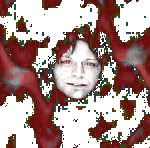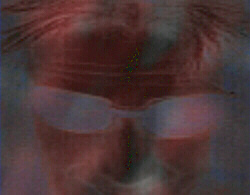db Sites uses flashes of high frequencies for external visual stimulation of the brain, the following people should not view this site in any case:
People subject to any forms of seizures or epilepsy
People using pacemakers
People suffering from cardiac arrhythmia or other heart disorders
People taking stimulants, psychoactive drugs, or tranquilizers


The easiest way of applying stimulus to the brain is via ears and eyes. Since humans cannot hear sounds low enough to be useful for brain stimulation, special techniques must be used. One such special techniqueused is called
binaural beats.
It is well known that the brain is an electrochemical organ; researchers have speculated that a fully functioning brain can generate as much as 10 watts of electrical power. Other more conservative investigators calculate that if all 10 billion interconnected nerve cells discharged at one time that a single electrode placed on the human scalp would record something like five millionths to 50 millionths of a volt. If you had enough scalps hooked up you might be able to light a flashlight bulb. Even though this electrical power is very limited, it does occur in very specific ways that are characteristic of the human brain. Electrical activity emanating from the brain is displayed in the form of brainwaves. There are four categories of these brainwaves, ranging from the most activity to the least activity. When the brain is aroused and actively engaged in mental activities, it generates beta waves. These beta waves are of relatively low amplitude, and are the fastest of the four different brainwaves. The frequency of beta waves ranges from 15 to 40 cycles a
second. Beta waves are characteristics of a strongly engaged mind. A person in active conversation would be in beta. A debater would be in high beta. A person making a speech, or a teacher, or a talk show host would all be in beta when they are engaged in their work. The Brainwaves The next brainwave category in order of frequency is alpha. Where beta represented arousal, alpha represents non-arousal. Alpha brainwaves are slower, and higher in amplitude. Their frequency ranges from 9 to 14 cycles per second. A person who has completed a task and sits down to rest is often in an alpha state. A person who takes time out to reflect or meditate is usually in an alpha state. A person who takes a break from a conference and walks in the garden is often in an alpha state. The next state, theta brainwaves, are typically of even greater amplitude and slower frequency. This frequency range is normally between 5 and 8 cycles a second. A person who has taken time off from a task and begins to daydream is often in a theta brainwave state. A person who is driving on a freeway, and discovers that they can't recall the last five miles, is often in a theta state--induced by the process of freeway driving. The repetitious nature of that form of driving
compared to a country road would differentiate a theta state and a beta state in order to perform the driving task safely. Individuals who do a lot of freeway driving often get good ideas during those periods when they are in theta. Individuals who run outdoors often are in the state of mental relaxation that is slower than alpha and when in theta, they are prone to a flow of ideas. This can also occur in the shower or tub or even while shaving or brushing your hair. It is a state where tasks become so automatic that you can mentally disengage from them. The ideation that can take place during the theta state is often free flow and occurs without censorship or guilt. It is typically a very positive mental state. The final brainwave state is delta. Here the brainwaves are of the greatest amplitude and slowest frequency. They typically center around a range of 1.5 to 4 cycles per second. They never go down to zero because that would mean that you were brain dead. But, deep dreamless sleep would take you down to the lowest frequency. Typically, 2 to 3 cycles a second. When we go to bed and read for a few minutes before attempting sleep, we are likely to be in low beta. When we put the book down, turn off the lights and close our eyes, our brainwaves will descend from beta, to alpha, to theta and finally, when we fall asleep, to delta. It is a well known fact that humans dream in 90 minute cycles. When the delta brainwave frequencies increase into the frequency of theta brainwaves, active dreaming takes place and often becomes more experiential to the person. Typically, when this occurs there is rapid eye movement, which is characteristic of active dreaming. This is called REM, and is a well known phenomenon. When an individual awakes from a deep sleep in preparation for getting up, their brainwave frequencies will increase through the different specific stages of brainwave activity. That is, they will increase from delta to theta and then to alpha and finally, when the alarm goes off, into beta. If that individual hits the snooze alarm button they will drop in frequency to a non-aroused state, or even into theta, or sometimes fall back to sleep in delta. During this awakening cycle it is possible for individuals to stay in the theta state for an extended period of say, five to 15 minutes--which would allow them to have a free flow of ideas about yesterday's events or to contemplate the activities of the forthcoming day. This time can be an extremely productive and can be a period of very meaningful and creative mental activity. In summary, there are four brainwave states that range from the high amplitude, low frequency
delta to the low amplitude, high frequency beta. These brainwave states range from deep dreamless sleep to high arousal. The same four brainwave states are common to the human species. Men, women and children of all ages experience the same characteristic brainwaves. They are consistent across cultures and country boundaries. Research has shown that although one brainwave state may predominate at any given time, depending on the activity level of the individual, the remaining three brain states are present in the mix of brainwaves at all times. In other words, while somebody is an aroused state and exhibiting a beta brainwave pattern, there also exists in that person's brain a component of alpha, theta and delta, even though these may be present only at the trace level. It has been my personal experience that knowledge of brainwave states enhances a person's ability to make use of the specialized characteristics of those states: these include being
Stimulating the brain with visual stimulus
Visual stimulation is easier than aural stimulation because low frequencies can readily be used. A frequency of 10Hz, for example, is generated when a led is flashed on and off 10 times a second in the front of your eyes.
When visual stimulus is in synch with aural stimulus, effects are highly increased over using only visual or only aural stimulus.
Works quite simply by sending different sounds (tones) to each ear by stereo headphones. The two hemispheres of the brain then act in unison to “hear” a third signal-the difference between the two tones. This is not an actual sound, but an electrical signal that can only be perceived within the brain by both brain hemispheres working together. The result is a focused, whole-brain state known as hemispheric synchronization, an optimal condition for improving human performance.
Specific combinations of tone signals, for example, can help individuals achieve laserlike focus and concentration. Different tone signals are used to facilitate profound relaxation, expanded awareness or other desired states. Depending on the intended goals, music, verbal guidance or subtle sound effects are combined with tones to strengthen its effectiveness.
Brainwave Freqency List

Meditation is essentially about willingly being able to alter one's brain frequency to a desired state. While meditators have traditionally used several years to learn the techniques of meditation, you can now attain the same effect with Audio & Visual. No special training or great discipline is required. Good meditation frequencies are in the alpha range, from 8Hz to 13Hz.
When a certain brainwave state is experienced and practiced over a period of time, the brain will "learn" the state change and it will become easier to self-produce the desired brainwave state at will. Thus, using Audio & Visaul, you can expect to get some of its effects later even without any external stimulus.
Reducing learning time
The theta state (4Hz–7Hz) has been found to increase learning capabilities. In fact, children spend more time in theta state than adults, which probably explains the accelerated learning capabilities of children.
Alpha frequencies are also useful for learning purposes. You can play language cassettes, subliminal tapes, etc. during an Audio & Visaul session for a maximum effect.
Reducing sleep needs
Some people have found that half an hour a day of the Theta state can replace up to 4 hours of sleep.
Treatment of certain mental diseases
Audio & Visaul is used in treatment of depression, low self-esteem, attention deficit disorder, drug and alcohol addiction and autism, to name a few.
Audio & Visaul has also been found helpful in alleviating headaches and migraines.


122 W. Second St.
Milan, MI. 48160
USA
e-mail: dbmusic@email.com
All Rights Reserved